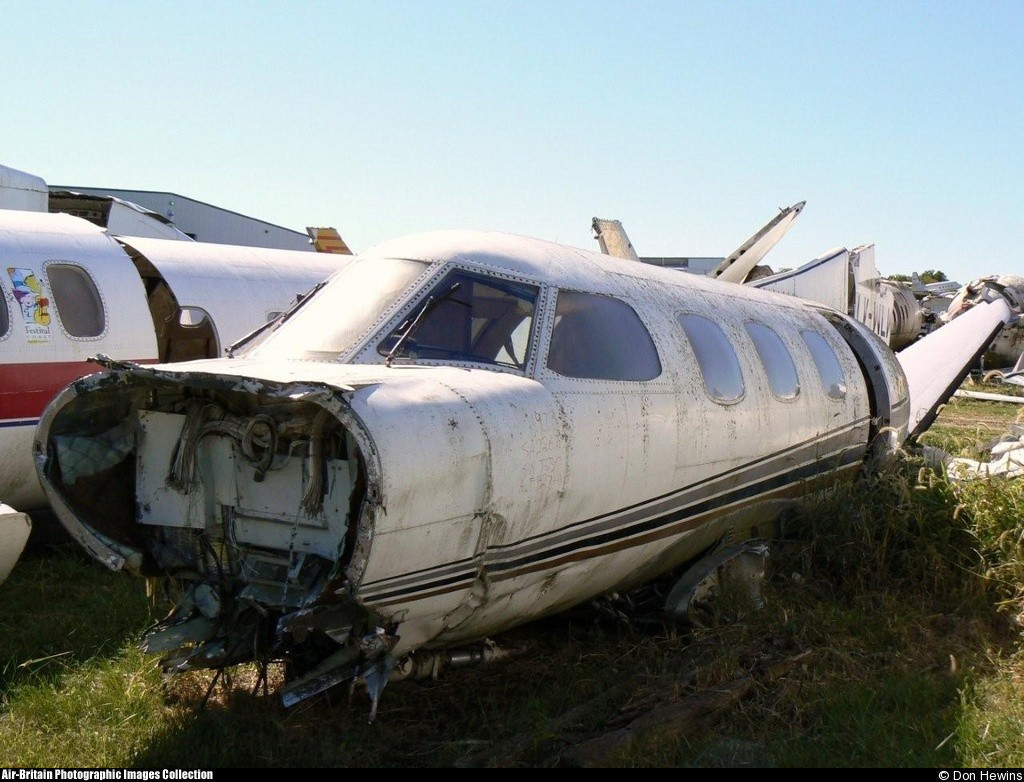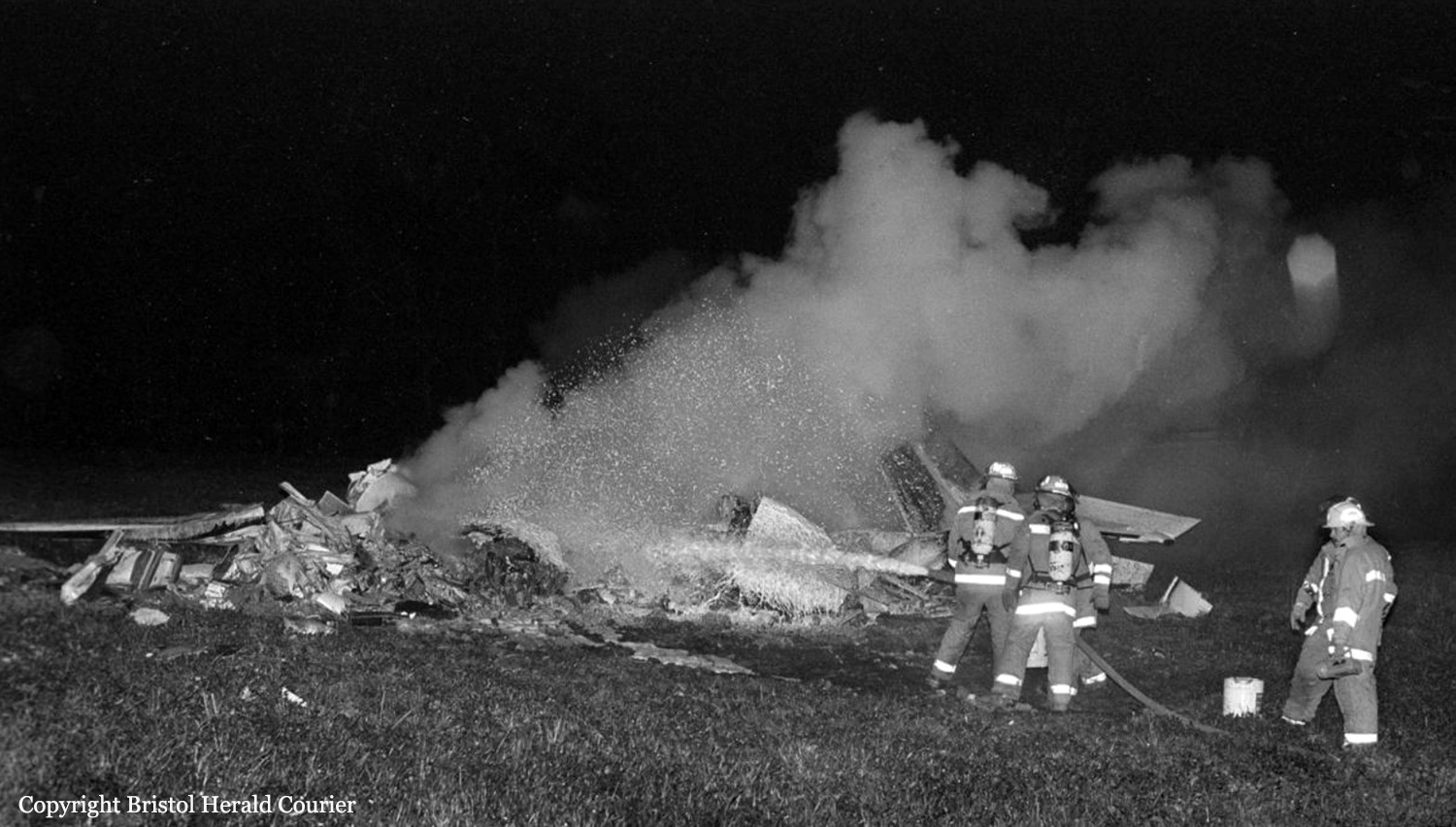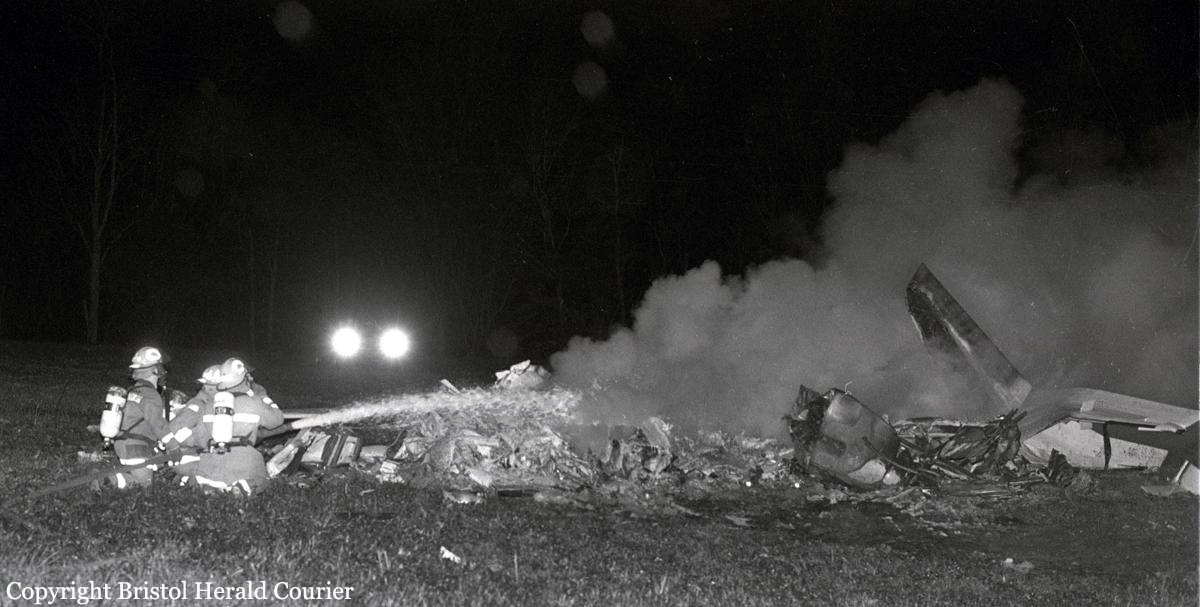Country
Crash of a Swearingen SA226T Merlin III in Byers: 1 killed
Date & Time:
Dec 19, 1997 at 2017 LT
Registration:
N950TT
Survivors:
No
Schedule:
Front Range - Aspen
MSN:
T-225
YOM:
1973
Crew on board:
1
Crew fatalities:
Pax on board:
0
Pax fatalities:
Other fatalities:
Total fatalities:
1
Captain / Total hours on type:
479.00
Aircraft flight hours:
6599
Circumstances:
The pilot departed Front Range Airport (elevation 5512 feet) at approximately 2008, climbed to 7,000 feet msl, accelerated to 270 knots, and requested his IFR clearance. Weather at the time of N950TT's departure was 500 feet overcast; witnesses reported the tops of the thin cloud condition were 8,500 feet msl and it was very dark on top (no stars or moon). The pilot made several changes in airspeed and climb rate until radar indicated that he had entered an 8,500 fpm decent. The pilot reported to ATC that he had 'stalled' the airplane. Radar indicated that he then climbed at 7,500 fpm until his estimated airspeed was 10 knots, and then subsequently descended again at 8,400 fpm until he impacted the frozen ground. The pilot had flown 4 times for 7 hours in the previous 40 days. Five airline pilots, each of who had 3,000 to 5,000 hours in Swearingens, stated individually that even though the airplane is single pilot certified, they believed that 'its a two pilot airplane--because the work load is too high.'
Probable cause:
The pilot inadvertently stalling the airplane and his subsequent spatial disorientation which prevented him from maintaining airplane control. Factors were excessive workload on the pilot and the dark night light conditions.
Final Report:

Crash of a Swearingen SA226T Merlin III in Ushuaia
Date & Time:
Apr 4, 1996 at 1350 LT
Registration:
LV-WLW
Survivors:
Yes
Schedule:
Río Grande – Ushuaia
MSN:
T-230
YOM:
1973
Crew on board:
2
Crew fatalities:
Pax on board:
0
Pax fatalities:
Other fatalities:
Total fatalities:
0
Circumstances:
On final approach to Ushuaia Airport, following an uneventful cargo flight from Río Grande, the twin engine aircraft collided with a flock of birds. The windshield was broken and the left engine lost power. The crew was able to continue the approach and landing. After touchdown, the aircraft went out of control and collided with a snow wall. Both pilots escaped with minor injuries and the aircraft was damaged beyond repair.
Probable cause:
Bird strike on final approach.


Crash of a Swearingen SA226T Merlin III in Chino
Date & Time:
Sep 18, 1995 at 0624 LT
Registration:
N693PG
Survivors:
Yes
Schedule:
Apple Valley - Chino
MSN:
T-207
YOM:
1970
Crew on board:
1
Crew fatalities:
Pax on board:
0
Pax fatalities:
Other fatalities:
Total fatalities:
0
Captain / Total hours on type:
346.00
Aircraft flight hours:
5218
Circumstances:
During arrival at dawn, the pilot contacted Approach Control about 22 miles from the airport at 8,500 feet and requested an ILS runway 26 approach. The ATIS was reporting 1/8 mile visibility with fog; the minimum published visibility for the ILS landing was 3/4 mile. The controller vectored the aircraft so that it intercepted the ILS localizer at the outer marker at an intercept angle that was 5 degrees greater than the maximum allowable intercept of 30 degrees. The intercept point should have been at least 3 miles further away from the airport. The aircraft was 650 feet above the ILS glideslope at the outer marker (which was outside the ILS glideslope parameter). Instead of making a missed approach, the pilot elected to continue the ILS. As he attempted to intercept the glideslope from above, the airplane entered a high rate of descent and passed through the glideslope. The pilot was arresting the descent, when the airplane collided with level terrain about 1,000 feet short of the runway. After the accident, at 0646 edt, the visibility was 1/16 mile with fog.
Probable cause:
The pilot's improper IFR procedure by not initiating a missed approach at the outer marker, by attempting to intercept the glideslope from above after passing the outer marker, and by allowing the airplane to continue descending after reaching the decision height. Factors relating to the accident were: the adverse weather condition, and the approach controller's improper technique in vectoring the airplane onto the ILS localizer.
Final Report:
Crash of a Swearingen SA227TT Merlin IIIC in Bristol: 4 killed
Date & Time:
Apr 1, 1993 at 2128 LT
Registration:
N500AK
Survivors:
No
Schedule:
Knoxville - Bristol
MSN:
TT-527
YOM:
1983
Crew on board:
1
Crew fatalities:
Pax on board:
3
Pax fatalities:
Other fatalities:
Total fatalities:
4
Captain / Total hours on type:
235.00
Aircraft flight hours:
2294
Circumstances:
N500AK encountered icing in flight before start of ILS approach. Radar data showed that before reaching outer marker, it slowed in a manner that was consistent with a power reduction (or partial loss of power), then it entered a steep descent and crashed. Examination revealed engines were not operating at impact and that propellers had been feathered. No preimpact part failure or malfunction of engines, propellers or anti-ice system was found. There was evidence that engine inlet anti-ice annunciator lights and stability augmentation system (SAS) fault warning light were illuminated during impact. The engine manufacturer reported that flameouts had occurred in other aircraft, during or following operation in icing conditions, sometimes after descent into warmer air. Flight manual noted that if icing was encountered with anti-ice system off, select continuous ignition and then select engine and propeller heat (1 engine at a time, ensuring first engine was operating satisfactorily before selecting second engine) and engage sas heat. All four occupants were killed.
Probable cause:
Failure of the pilot to follow procedures concerning use of the engine inlet anti-ice system and/or continuous ignition while operating in icing conditions, which resulted in probable ice ingestion and loss of engine power; and the pilot's failure to maintain sufficient airspeed while coping with the engine problem, which resulted in a stall. Factors related to the accident were: darkness, icing conditions, and engine inlet (nacelle) ice.
Final Report:

